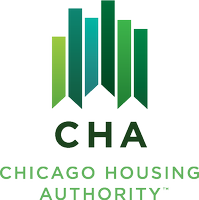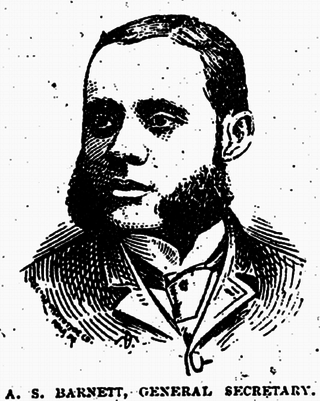
Ida Bell Wells-Barnett was an American investigative journalist, educator, and early leader in the civil rights movement. She was one of the founders of the National Association for the Advancement of Colored People (NAACP). Wells dedicated her career to combating prejudice and violence, and advocating for African-American equality—especially that of women.

Gwendolyn Elizabeth Brooks was an American poet, author, and teacher. Her work often dealt with the personal celebrations and struggles of ordinary people in her community. She won the Pulitzer Prize for Poetry on May 1, 1950, for Annie Allen, making her the first African American to receive a Pulitzer Prize.

Douglas, on the South Side of Chicago, Illinois, is one of Chicago's 77 community areas. The neighborhood is named for Stephen A. Douglas, Illinois politician and Abraham Lincoln's political foe, whose estate included a tract of land given to the federal government. This tract later was developed for use as the Civil War Union training and prison camp, Camp Douglas, located in what is now the eastern portion of the Douglas neighborhood. Douglas gave that part of his estate at Cottage Grove and 35th to the Old University of Chicago. The Chicago 2016 Olympic bid planned for the Olympic Village to be constructed on a 37-acre (15 ha) truck parking lot, south of McCormick Place, that is mostly in the Douglas community area and partly in the Near South Side.
Duster or dusters may refer to:

The Alpha Suffrage Club was the first and most important black female suffrage club in Chicago and one of the most important in Illinois. It was founded on January 30, 1913, by Ida B. Wells with the help of her white colleagues Belle Squire and Virginia Brooks. The Club aimed to give a voice to African American women who had been excluded from national suffrage organizations such as the National American Women Suffrage Association (NAWSA). Its stated purpose was to inform black women of their civic responsibility and to organize them to help elect candidates who would best serve the interests of African Americans in Chicago.

The People's Grocery lynchings of 1892 occurred on March 9, 1892, in Memphis, Tennessee, when black grocery owner Thomas Moss and two of his workers, Will Stewart and Calvin McDowell, were lynched by a white mob while in police custody. The lynchings occurred in the aftermath of a fight between whites and blacks and two subsequent shooting altercations in which two white police officers were wounded.

The Chicago Housing Authority (CHA) is a municipal corporation that oversees public housing within the city of Chicago. The agency's Board of Commissioners is appointed by the city's mayor, and has a budget independent from that of the city of Chicago. CHA is the largest rental landlord in Chicago, with more than 50,000 households. CHA owns over 21,000 apartments. It also oversees the administration of 37,000 Section 8 vouchers. The current acting CEO of the Chicago Housing Authority is Tracey Scott.

The Ida B. Wells-Barnett House was the residence of civil rights advocate Ida B. Wells (1862–1931) and her husband Ferdinand Lee Barnett from 1919 to 1930. It is located at 3624 S. Dr. Martin Luther King Jr. Drive in the Bronzeville section of the Douglas community area on the South Side of Chicago, Illinois. It was designated a Chicago Landmark on October 2, 1995. It was listed on the National Register of Historic Places and as a National Historic Landmark on May 30, 1974.

The South Side Community Art Center is a community art center in Chicago that opened in 1940 with support from the Works Progress Administration's Federal Art Project in Illinois. Opened in Bronzeville in an 1893 mansion, it became the first black art museum in the United States and has been an important center for the development Chicago's African American artists. Of more than 100 community art centers established by the WPA, this is the only one that remains open.

The Ida B. Wells Homes, which also comprised the Clarence Darrow Homes and Madden Park Homes, was a Chicago Housing Authority (CHA) public housing project located in the heart of the Bronzeville neighborhood on the South Side of Chicago, Illinois. It was bordered by 35th Street to the north, Pershing Road to the south, Cottage Grove Avenue to the east, and Martin Luther King Drive to the west. The Ida B. Wells Homes consisted of rowhouses, mid-rises, and high-rise apartment buildings, first constructed 1939 to 1941 to house African American tenants. They were closed and demolished beginning in 2002 and ending in 2011.

The Barack Obama Presidential Center is a planned museum, library and education project in Chicago to commemorate the presidency of Barack Obama, the 44th president of the United States. The center will also include community and conference facilities and will house the nonprofit Obama Foundation. Construction on the 19.3 acre campus is expected to top out in April 2024, and the center to open in the first half of 2026.

Nikole Sheri Hannah-Jones is an American investigative journalist, known for her coverage of civil rights in the United States. She joined The New York Times as a staff writer in April 2015, was awarded a MacArthur Fellowship in 2017, and won the Pulitzer Prize for Commentary in 2020 for her work on The 1619 Project. Hannah-Jones is the inaugural Knight Chair in Race and Journalism at the Howard University School of Communications, where she also founded the Center for Journalism and Democracy.

The Bolling–Gatewood House is a historic cottage in Holly Springs, Mississippi, USA. It is home to the Ida B. Wells-Barnett Museum, named for former slave, journalist, and suffragist Ida B. Wells.

Alfred S. Barnett was an American journalist and civil rights activist in Omaha, Nebraska, Des Moines, Iowa, and Chicago, Illinois. In Des Moines, Barnett created and ran the newspaper, The Weekly Avalanche from 1891 to 1894. Before moving to Des Moines, he contributed to his brother, Ferdinand L. Barnett's Omaha paper, The Progress. He worked for civil rights also a member and an officer of numerous civil rights organizations, including the Nebraska branch of the National Afro-American League and the Afro-American Protective Association of Iowa. Barnett was described as a "pleasing speaker".

Ferdinand Lee Barnett was an American journalist, lawyer, and civil rights activist in Chicago, beginning in the late Reconstruction era.
The Barack Obama Foundation is a Chicago-based nonprofit organization founded in 2014. It oversees the creation of the Barack Obama Presidential Center, runs the My Brother's Keeper Alliance, and operates a scholarship program through the University of Chicago's Harris School of Public Policy.
Mariame Kaba is an American activist, grassroots organizer, and educator who advocates for the abolition of the prison industrial complex, including all police. She is the author of We Do This 'Til We Free Us (2021). The Mariame Kaba Papers are held by the Chicago Public Library Special Collections.

Alfreda M. Duster was an American social worker and civic leader in Chicago. She is best known as the youngest daughter of civil rights activist Ida B. Wells and as the editor of her mother's posthumously published autobiography, Crusade for Justice: The Autobiography of Ida B. Wells (1970).

Saint Suttle, was an American composer and performer. Suttle was well known as a cakewalk artist and vaudeville performer in Chicago. An African American, he was a pioneering performer in early film of the late 19th-century.
Michelle Duster is an American author and public historian. She is known for her work to preserve the legacy of her great-grandmother, Ida B. Wells.
















